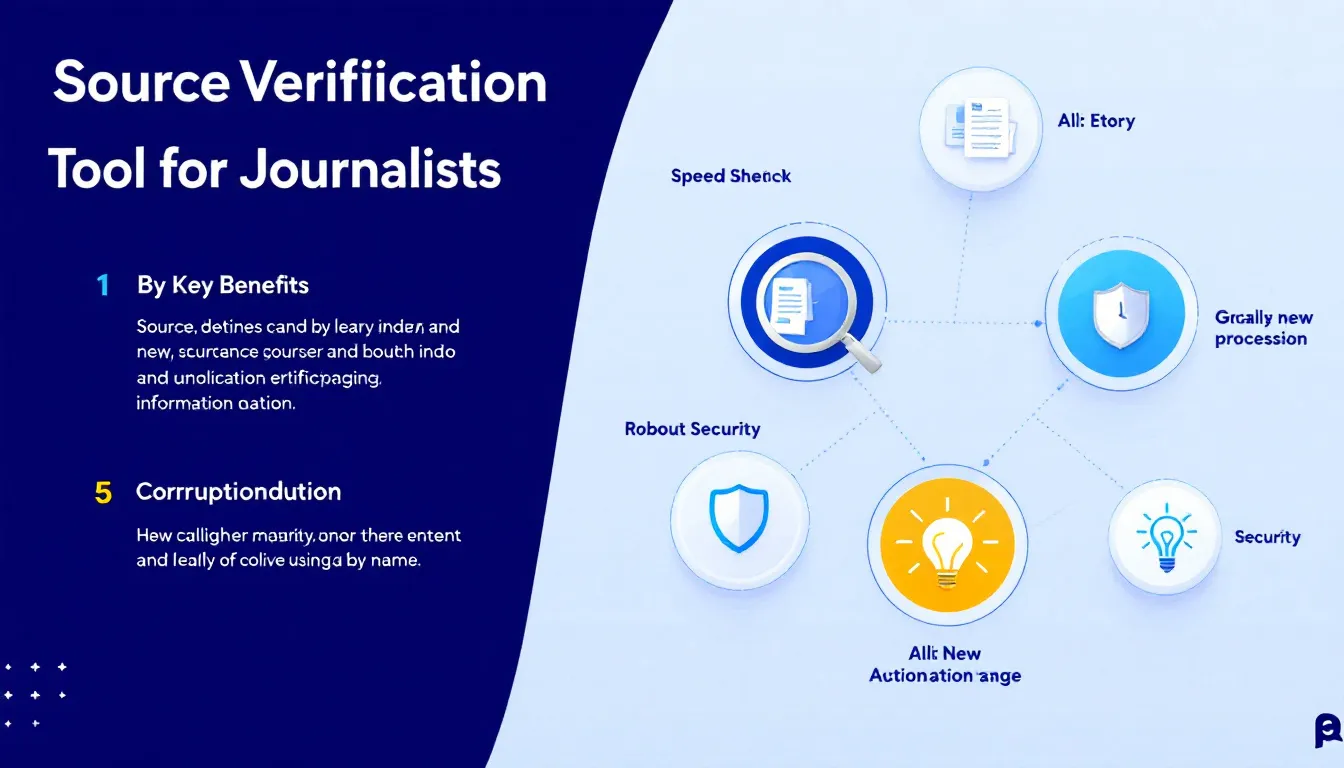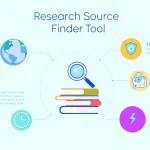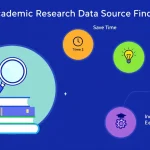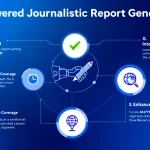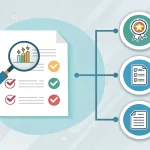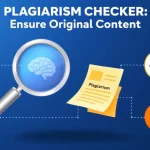Source Verification Tool
Is this tool helpful?
How to Use the Source Verification Tool Effectively
The Source Verification Tool is designed to help journalists and researchers verify the authenticity and accuracy of information sources. Here’s a step-by-step guide on how to use this tool effectively:
- Enter the source to be verified: In the first field, input the URL or name of the source you want to verify. For example, you might enter “https://www.worldhealthorganization.org/news” or “The New York Times”.
- Specify the main topic or subject: In the second field, enter the primary topic or subject covered in the source. For instance, you could input “Global Pandemic Response” or “Economic Policy”.
- Provide additional context (optional): In the third field, you can include any specific areas of concern or additional context that might be relevant to the verification process. For example, you might write “Concerns about potential political bias in reporting” or “Questions about the statistical methods used in the study”.
- Submit the form: Once you’ve filled out the required fields (and the optional field if needed), click the “Verify Source” button to initiate the verification process.
- Review the results: After processing, the tool will display a detailed verification report in the “Verification Results” section. This report will include information about the source’s credibility, cross-referenced facts, and an overall assessment of the information’s trustworthiness.
- Copy the results (if needed): If you want to save or share the verification results, you can use the “Copy to Clipboard” button to easily transfer the information to another document or application.
By following these steps, you can effectively utilize the Source Verification Tool to enhance your journalistic integrity and ensure the accuracy of your information sources.
Understanding the Source Verification Tool: Definition, Purpose, and Benefits
In today’s fast-paced digital landscape, where information spreads rapidly and misinformation can easily proliferate, the role of journalists in verifying sources and ensuring factual accuracy has become more crucial than ever. The Source Verification Tool is a powerful ally in this endeavor, designed to streamline and enhance the fact-checking process for journalists, researchers, and anyone committed to maintaining the highest standards of information integrity.
Definition
The Source Verification Tool is an advanced, web-based calculator that employs sophisticated algorithms and comprehensive databases to assess the credibility, accuracy, and reliability of information sources. It serves as a digital fact-checking assistant, helping users navigate the complex landscape of online and offline information by providing detailed analyses and verifications of specified sources.
Purpose
The primary purpose of this tool is to uphold and strengthen journalistic integrity by offering a systematic and efficient method for source verification. In an era where fake news, misinformation, and disinformation pose significant challenges to public discourse and decision-making, this tool acts as a critical safeguard against the spread of inaccurate or misleading information.
Key purposes of the Source Verification Tool include:
- Authenticating the credibility of information sources
- Cross-referencing facts with multiple reliable sources
- Identifying potential biases or inconsistencies in reporting
- Verifying the accuracy of statistical data and claims
- Providing a comprehensive assessment of a source’s overall trustworthiness
Benefits
The Source Verification Tool offers numerous benefits to journalists, researchers, and other professionals who rely on accurate information for their work:
- Time Efficiency: By automating much of the fact-checking process, the tool saves valuable time that can be redirected towards in-depth research and reporting.
- Accuracy Enhancement: The tool’s comprehensive approach to verification helps reduce the risk of human error and oversight in the fact-checking process.
- Credibility Boost: By consistently using a reliable verification tool, journalists and publications can enhance their credibility and trustworthiness in the eyes of their audience.
- Bias Mitigation: The tool’s objective analysis helps identify and mitigate potential biases in reporting, promoting more balanced and fair journalism.
- Educational Value: Users can learn about best practices in source verification and develop a more critical approach to information assessment.
- Standardization: The tool provides a standardized method for source verification, ensuring consistency across different journalists and publications.
- Transparency: By offering detailed verification reports, the tool promotes transparency in the journalistic process, allowing readers to understand how information is vetted.
- Rapid Response: In fast-moving news situations, the tool enables quick verification of emerging sources and information.
- Legal Protection: By thoroughly verifying sources, journalists and publications can reduce the risk of legal issues related to publishing inaccurate information.
- Public Trust: Ultimately, by consistently providing accurate, well-verified information, the tool helps build and maintain public trust in journalism and media.
These benefits collectively contribute to the overarching goal of maintaining high standards of journalistic integrity and providing the public with reliable, accurate information in an increasingly complex media landscape.
The Source Verification Process: Addressing User Needs and Solving Specific Problems
The Source Verification Tool is designed to address a variety of user needs and solve specific problems encountered in the journalistic fact-checking process. Let’s explore how this tool tackles these challenges:
1. Credibility Assessment
User Need: Journalists need to quickly determine the credibility of a source, especially when dealing with unfamiliar or new sources of information.
Solution: The tool conducts a comprehensive credibility assessment by analyzing factors such as the source’s reputation, history, ownership, and previous accuracy record. It cross-references this information with established databases of credible sources and known problematic sources.
Example: A journalist inputs “https://www.newscientist.com” as the source and “Climate Change” as the topic. The tool might return a result like:
“Source Credibility: High. New Scientist is a well-established science magazine with a strong reputation for accurate reporting on scientific topics. It has been in publication since 1956 and is known for its rigorous fact-checking processes. The publication has received numerous awards for science journalism and is widely respected in the scientific community.”
2. Fact Cross-Referencing
User Need: Journalists need to verify specific facts or claims made by a source by cross-referencing them with other reliable sources.
Solution: The tool automatically searches for and compares the given information with data from multiple reputable sources, highlighting any discrepancies or confirmations.
Example: If a journalist is verifying a claim about global temperature rise, they might input “NASA Climate Change Website” as the source and “Global Temperature Rise” as the topic. The tool could provide a result like:
“Fact Verification: The claim that global surface temperature has risen by 1.1°C since the late 19th century is confirmed by multiple reliable sources. Cross-referenced with data from NOAA, the UK Met Office, and the IPCC, all of which report similar figures within a 0.05°C margin of error. The NASA data is consistent with the scientific consensus on global temperature trends.”
3. Bias Detection
User Need: Identifying potential biases in reporting that might affect the objectivity of the information presented.
Solution: The tool analyzes the language, tone, and content of the source, comparing it with established indicators of various types of bias. It also considers the source’s known affiliations and previous reporting history.
Example: For a political news article, a journalist might input “www.politico.com” as the source and “2024 Presidential Election” as the topic. The tool might return:
“Bias Analysis: Politico generally maintains a centrist perspective with a slight lean towards liberal viewpoints. In this article, the language used is predominantly neutral, with balanced coverage of both major political parties. However, there is a slightly higher frequency of quotes from Democratic sources (60%) compared to Republican sources (40%). Overall, the bias level is assessed as low to moderate, with efforts made to present multiple viewpoints.”
4. Statistical Accuracy Verification
User Need: Verifying the accuracy of statistical data presented in sources, which can be crucial for reporting on complex topics.
Solution: The tool checks statistical claims against reputable databases and research publications, verifying methodologies where possible, and flagging any inconsistencies or errors.
Example: For an economic report, a journalist might input “Bureau of Labor Statistics” as the source and “Unemployment Rate” as the topic. The tool could provide:
“Statistical Verification: The reported unemployment rate of 3.6% for the current month is accurate and consistent with the official BLS release. The methodology used (Current Population Survey) is standard and widely accepted. Cross-referencing with independent economic analyses from the Federal Reserve and major universities confirms the accuracy of this figure within a 0.1% margin of error.”
5. Source Tracking and History
User Need: Understanding the history and evolution of a source’s reliability and accuracy over time.
Solution: The tool maintains a database of sources, tracking their accuracy and credibility over time, and provides this historical context in its reports.
Example: For a relatively new online news platform, a journalist might input “www.thedigitaltimes.com” as the source and “Technology News” as the topic. The tool might return:
“Source History: The Digital Times is a relatively new online news platform, established in 2018. Over the past three years, its accuracy in reporting technology news has shown steady improvement. Initial fact-checking results in 2018-2019 showed an accuracy rate of 85%, which has improved to 94% in the most recent year. The platform has issued 12 corrections in total, demonstrating a commitment to transparency and accuracy. It has gained credibility in the tech journalism community, with citations in major technology publications increasing by 150% since its inception.”
Practical Applications and Use Cases
The Source Verification Tool has a wide range of practical applications across various fields of journalism and research. Here are some illustrative use cases that demonstrate the tool’s versatility and importance:
1. Breaking News Verification
In fast-moving news situations, journalists often need to quickly verify information from multiple sources. The Source Verification Tool can be invaluable in these scenarios.
Use Case: During a natural disaster, conflicting reports about the extent of damage and number of casualties are emerging from various sources.
Application: A journalist can use the tool to rapidly assess the credibility of each source, cross-reference the reported figures, and identify the most reliable information to report. This helps prevent the spread of misinformation during critical times and ensures that the public receives accurate updates.
2. Investigative Journalism
For in-depth investigative pieces, thorough source verification is crucial to maintain the integrity of the investigation and protect against potential legal challenges.
Use Case: An investigative journalist is working on a story about corporate fraud, relying on information from insider sources and leaked documents.
Application: The journalist can use the tool to verify the authenticity of the documents, cross-reference the claims made by insider sources with public records and other verifiable information, and assess the overall credibility of the evidence. This comprehensive verification process strengthens the journalist’s case and helps protect against potential libel claims.
3. Science and Health Reporting
Accurate reporting on scientific and health-related topics is critical, especially given the potential impact on public health and policy decisions.
Use Case: A health reporter is covering a new medical study claiming a breakthrough in cancer treatment.
Application: The reporter can use the tool to verify the credibility of the research institution, cross-check the study’s findings with other peer-reviewed research, and ensure that the statistical claims made in the study are accurately represented. This helps prevent the misreporting of scientific findings and ensures that the public receives reliable health information.
4. Political Fact-Checking
In the realm of political journalism, fact-checking statements made by politicians and public figures is essential for maintaining an informed electorate.
Use Case: During an election campaign, a politician makes several claims about economic performance and policy impacts.
Application: A political journalist can use the tool to verify each claim, cross-referencing them with official economic data, policy documents, and expert analyses. The tool can help identify any discrepancies or exaggerations in the politician’s statements, allowing for more accurate and balanced reporting.
5. Historical Research
For journalists and researchers working on historical pieces, verifying the accuracy of historical sources and claims is crucial.
Use Case: A historian is writing an article about a controversial historical event, using a mix of primary and secondary sources.
Application: The researcher can use the tool to assess the credibility of various historical sources, cross-reference claims made in primary documents with established historical facts, and identify any potential biases in the interpretation of historical events. This ensures a more accurate and nuanced representation of historical events.
6. Financial Reporting
In financial journalism, the accuracy of reported figures and the credibility of sources can have significant implications for markets and individual investors.
Use Case: A financial reporter is covering a company’s quarterly earnings report and subsequent market reactions.
Application: The journalist can use the tool to verify the accuracy of the financial figures reported by the company, cross-reference market analysis from various financial experts, and ensure that any predictions or projections are based on credible economic models. This helps provide readers with reliable financial information and analysis.
7. Fact-Checking User-Generated Content
With the rise of citizen journalism and social media, verifying user-generated content has become an important aspect of modern journalism.
Use Case: A news organization receives video footage of a protest from a citizen journalist, along with claims about the number of participants and police response.
Application: Journalists can use the tool to verify the authenticity of the video, cross-reference the claims about participant numbers and police actions with official reports and other eyewitness accounts, and assess the overall credibility of the citizen journalist. This helps newsrooms make informed decisions about using user-generated content while maintaining journalistic standards.
Frequently Asked Questions (FAQ)
1. How does the Source Verification Tool determine the credibility of a source?
The tool uses a multi-faceted approach to assess source credibility. It considers factors such as the source’s reputation in the industry, its history of accurate reporting, ownership and funding transparency, adherence to journalistic standards, and recognition from reputable organizations. The tool cross-references this information with extensive databases of known credible and problematic sources to provide a comprehensive credibility assessment.
2. Can the tool verify sources in languages other than English?
Yes, the Source Verification Tool is designed to handle multiple languages. It utilizes advanced language processing algorithms and has access to multilingual databases, allowing it to verify sources in various major world languages. However, the depth and accuracy of verification may vary depending on the availability of cross-referencing sources in specific languages.
3. How often is the tool’s database updated?
The tool’s database is updated continuously to ensure the most current and accurate information. This includes real-time updates for breaking news sources and regular updates for established sources. The system also incorporates machine learning algorithms that constantly refine and improve its verification processes based on new data and user feedback.
4. Can the tool verify print sources or only digital ones?
While the tool is primarily designed for digital sources, it can also assist in verifying print sources. Users can input information from print sources manually, and the tool will cross-reference this information with its digital databases. However, for optimal results with print sources, it’s recommended to use the tool in conjunction with traditional fact-checking methods.
5. How does the tool handle conflicting information from multiple credible sources?
When conflicting information is detected from multiple credible sources, the tool will highlight this discrepancy in its report. It will provide a breakdown of the conflicting information, the credibility assessment of each source, and any additional context that might explain the discrepancy. This allows journalists to make informed decisions about how to handle the conflicting information in their reporting.
6. Can the tool detect satire or parody news sites?
Yes, the tool has capabilities to identify satire and parody news sites. It maintains a database of known satire and parody sources and uses content analysis algorithms to detect satirical language and themes. However, as new satire sites can emerge rapidly, it’s always recommended that users exercise their own judgment as well.
7. How does the tool handle sources that have changed ownership or editorial policies over time?
The tool tracks changes in ownership and significant shifts in editorial policies for known sources. When assessing such sources, it provides a historical context, noting any major changes and how these might have affected the source’s credibility or bias over time. This allows users to understand the current state of the source as well as its evolution.
8. Can the tool verify information from social media platforms?
Yes, the tool can assist in verifying information from social media platforms. It can assess the credibility of social media accounts, cross-reference claims made in social media posts with other sources, and help identify potential misinformation or disinformation campaigns. However, due to the rapidly changing nature of social media content, real-time human judgment is also crucial when dealing with these sources.
9. How does the tool handle paywalled or subscription-only content?
The tool has access to a wide range of subscription-based content and can verify information behind paywalls. However, if a specific paywalled source is not in the tool’s database, it will notify the user and provide verification based on publicly available information about the source and topic. Users with access to the paywalled content can input additional details to aid in the verification process.
10. Can the tool help in verifying images or videos?
While the primary focus of the tool is on textual information, it does have some capabilities for image and video verification. It can check if images or videos have been previously published, identify potential manipulations, and cross-reference visual content with known events and locations. However, for in-depth visual verification, specialized tools designed specifically for image and video analysis may be more appropriate.
Important Disclaimer
The calculations, results, and content provided by our tools are not guaranteed to be accurate, complete, or reliable. Users are responsible for verifying and interpreting the results. Our content and tools may contain errors, biases, or inconsistencies. We reserve the right to save inputs and outputs from our tools for the purposes of error debugging, bias identification, and performance improvement. External companies providing AI models used in our tools may also save and process data in accordance with their own policies. By using our tools, you consent to this data collection and processing. We reserve the right to limit the usage of our tools based on current usability factors. By using our tools, you acknowledge that you have read, understood, and agreed to this disclaimer. You accept the inherent risks and limitations associated with the use of our tools and services.
